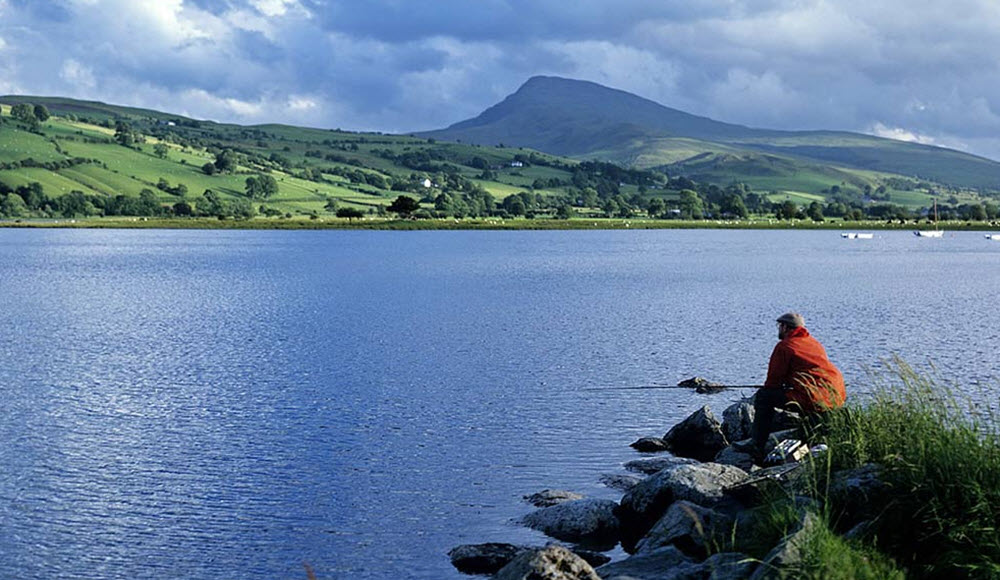Llyn Tegid is a lake located in Gwyneed, Wales. Llyn Tegid is the Welsh name for the lake but it is also called Bala Lake. The name Tegid probably comes from the Welsh word “teg” which means fair. Bala means “outlet of a lake”. An even older name that is no longer used is Pemble Mere or Pimble Mere.
In the 12th century it is mentioned as Penmelesmere in a translation. In 1806 the name “Pymplwy meer” appeared.
The lake is located in a glacier valley. The lake has fairly straight and parallel sides.

In Llyn Tegid there are plenty of pike, perch, trout, roach and eel.
There is also a local fish called the gwyniad. It is listed as critically endangered by the IUCN due to the introduction of the invasive ruff and other rare molluscs.
It is said that despite the river Dee flowing through the lake, their water is never mixed. That has never been proven.
During the 1990s, the lake was exposed to heavy algal blooms of blue-green algae. This is due to eutrophication of the lake. A plan was then put forward to reduce the pollution to the lake.
From the beginning, this was the largest natural body of water in Wales. That changed when Thomas Telford raised the water level in the lake to support the flow of the Ellesmere Canal.
Llyn Tegid is 6 km long and 0.8 km wide.
The water in the lake is deep and clear.
The River Dee flows through the Llyn Tegid.
At the northeastern end of the lake is the city of Bala. Along the southeastern shore of the lake, the Bala Lake Railway runs 4.8 km to the village of Llanuwchllyn in the southwest.
There is a legend about Tegid Foel who was the husband of the witch Ceridwen.
The place where his court stood is now under the water. According to the legend, the court was drowned one night. It is said that you can see the light of the court and the little town when the moon is full, casting its light on the lake.
The mountains were originally formed about 500 million years ago.
The lowest were below sea level, while the highest mountains were the result of volcanic activity. The area has been shaped by glaciation.
Llyn Tegid) is the largest natural lake in Wales. It can freeze sometimes. Most recently during the severe winters of 1947 and 1963.
Coastal climate prevails at Llyn Tegid. The annual average temperature in the area is 5 ° C. July is the warmest month of the year, when the average temperature is 13 ° C. January is the coldest month with an average temperature of −2 ° C.
The lake is located in a fantastic mountain landscape and is a popular place for fishing and water sports, including sailing, kayaking and canoeing.
At Llyn Tegid there are two sailing clubs and some more companies that will rent out kayaks, yachts and various other types of boats for tourists.
Llyn Tegid is located 160 meters above sea level. The area of the lake is 4.8 square kilometers. Around Llyn Tegid, mainly mixed forest grows.